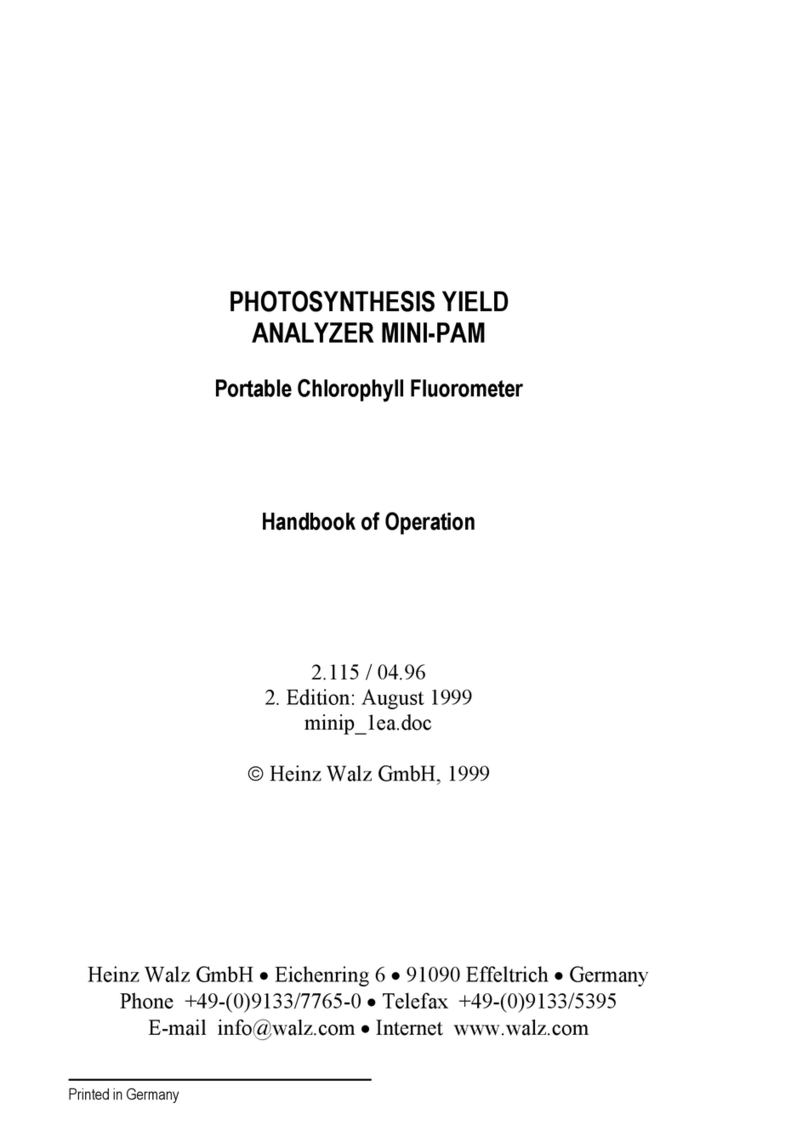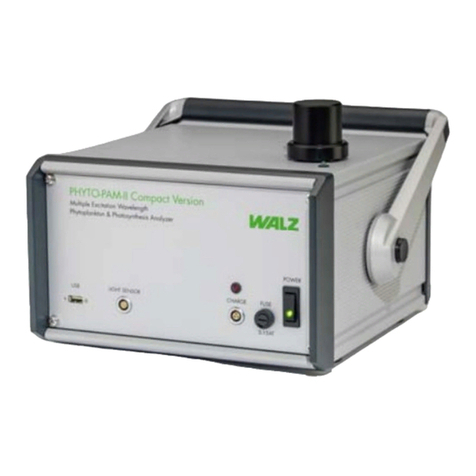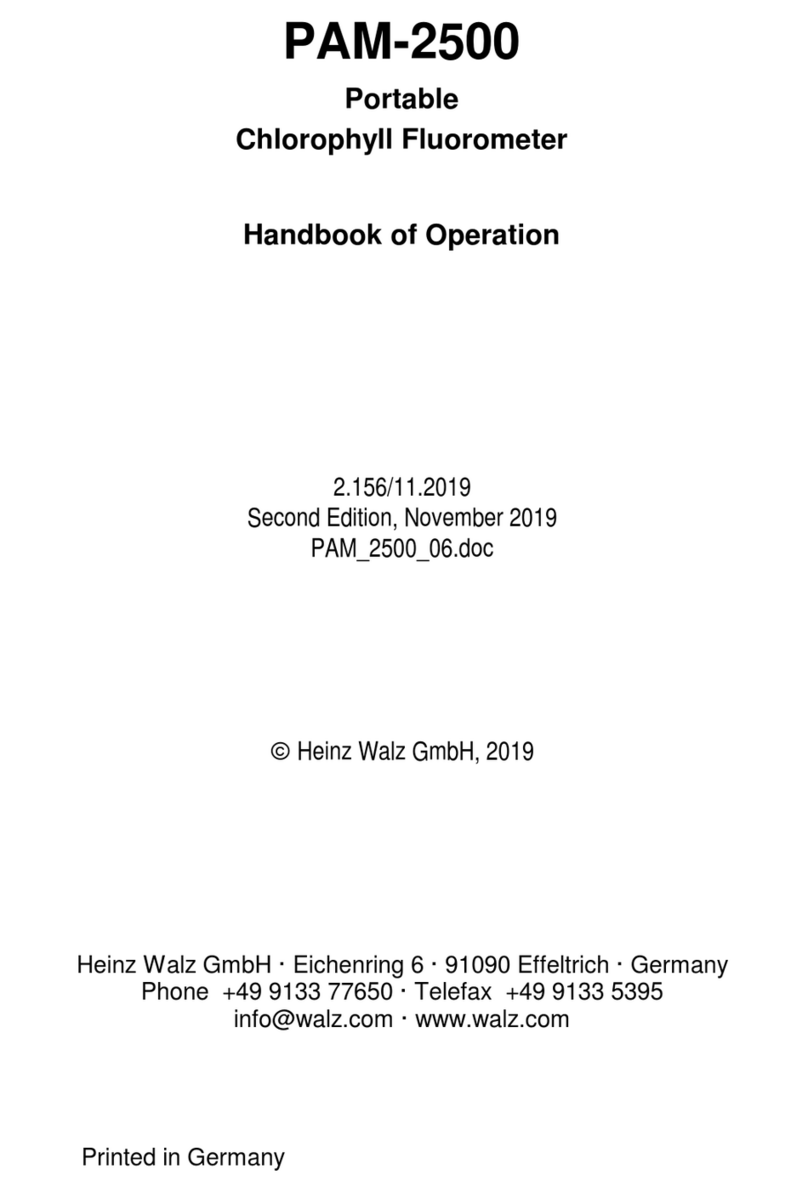
Contents Chapter 1
C3
7.3.1.4 Damping.............................................................................. 74
7.3.1.5 ETR-Factor ........................................................................ 75
7.3.1.6 Fo’ Mode............................................................................. 75
7.3.1.7 Adjust F-Offset.................................................................. 75
7.3.2 Light Sources .................................................................... 77
7.3.2.1 Far Red Sett. ..................................................................... 78
7.3.2.2 Light Panel Sett................................................................ 78
7.3.2.3 SAT Settings...................................................................... 79
7.3.3 Program/Clock Settings ................................................. 80
7.3.3.1 Actinic + Yield.................................................................... 81
7.3.3.2 Induction Curve ................................................................ 82
7.3.3.3 Light Curve......................................................................... 83
7.3.4 Sensors ............................................................................... 85
7.3.4.1 Internal PAR ...................................................................... 86
7.3.4.2 Leaf Clip/Ext. PAR........................................................... 88
7.3.4.3 Oxygen Sensor................................................................. 92
7.3.4.4 Spectrometer..................................................................... 93
7.3.4.5 Load System Settings..................................................... 96
7.3.5 MINI-PAM-II Settings...................................................... 96
7.3.6 Memory ............................................................................. 101
7.3.7 Info...................................................................................... 101
7.3.7.1 MINI-PAM-II Info............................................................. 102
7.3.7.2 Sensor Info...................................................................... 103
7.3.7.3 Firmware Info ................................................................. 104
8 Specifications MINI-PAM-II ............................. 105
8.1 Basic System................................................................... 105
8.1.1 Optoelectronic Unit........................................................ 105
8.1.2 Fiberoptics MINI-PAM/F .............................................. 107
8.1.3 Power Supply MINI-PAM-II/N..................................... 107
8.1.4 Battery Charger 000190101101................................ 108
8.1.5 Distance Clip 60° 2010-A ............................................ 108






























